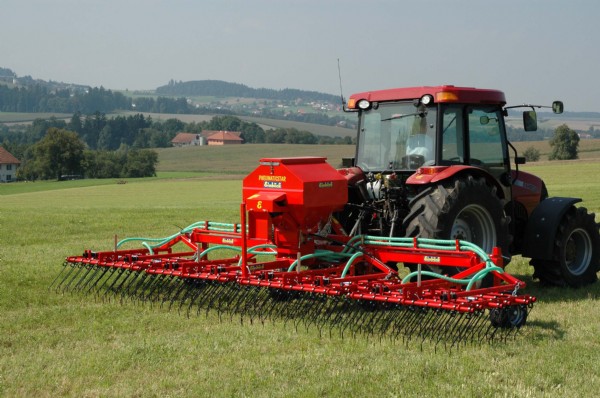

Around a quarter of the grass seed sold in the UK is used for over seeding. This seed is sown to improve worn or damaged leys as well as for patching up recent sowings which have not taken well. To many farmers, over seeding has advantages over the plough. It's cheap, quick and is of low risk, with existing grass being retained and improved without loss of forage or time. To get the best results follow our guidance.
Get the Timing Right
Seed can be sown into open swards when soil temperatures are above 7°C, usually between March and September. Seed can be sown at any point through the summer provided that there is sufficient soil moisture. However, competitive swards should be left during May and June when excessive grass growth will smother new seedlings.
How to Sow
Grass and clover seed may be broadcast or drilled into recently grazed or cut leys and pasture. Seed can be broadcast into open swards but some tilth must be obtained with either a chain or comb harrow. The latter is more vigorous than a chain harrow and is better for opening up matted swards. Once sown, the surface should be consolidated using a ring or flat roller or by treading in with sheep. Alternatively, a grass drill such as the Moores or Aitchison may be used. Heavy direct drills with discs designed for cereals do not produce such good results as the seed is at risk of being sown too deep. For the low sowing rates of clover a suitable applicator will be needed. The electronically driven spinners (e.g. Stocks) are good for applying these low rates and will distribute clover seed 10 12 metres.
What to Sow
Not all grasses and clovers are suitable for over seeding. The best results come from the large seeded and vigorous strains of tetraploid ryegrass. Of these, the Italian and hybrid forms are the quickest and best for cutting with perennials being ideal for grazing leys. White clovers usually give good results when sown into warm, moist soils and especially where careful post sowing grazing management is practiced.
Post Sowing Management
Grazing is much preferred to cutting once the seed has been sown as bulking up for silage or hay will smother newly emerging seedlings. Grazing should be resumed five weeks after sowing, but the sward should not be over grazed. Cattle or sheep may be employed, but sheep should not be left on for too long as they will graze too close, damaging new seedlings. Although cattle exert more pressure on the ground, they do not bite so accurately or as close and are the preferred choice provided that dry ground conditions prevail.
Date Posted: 30th March 2017



